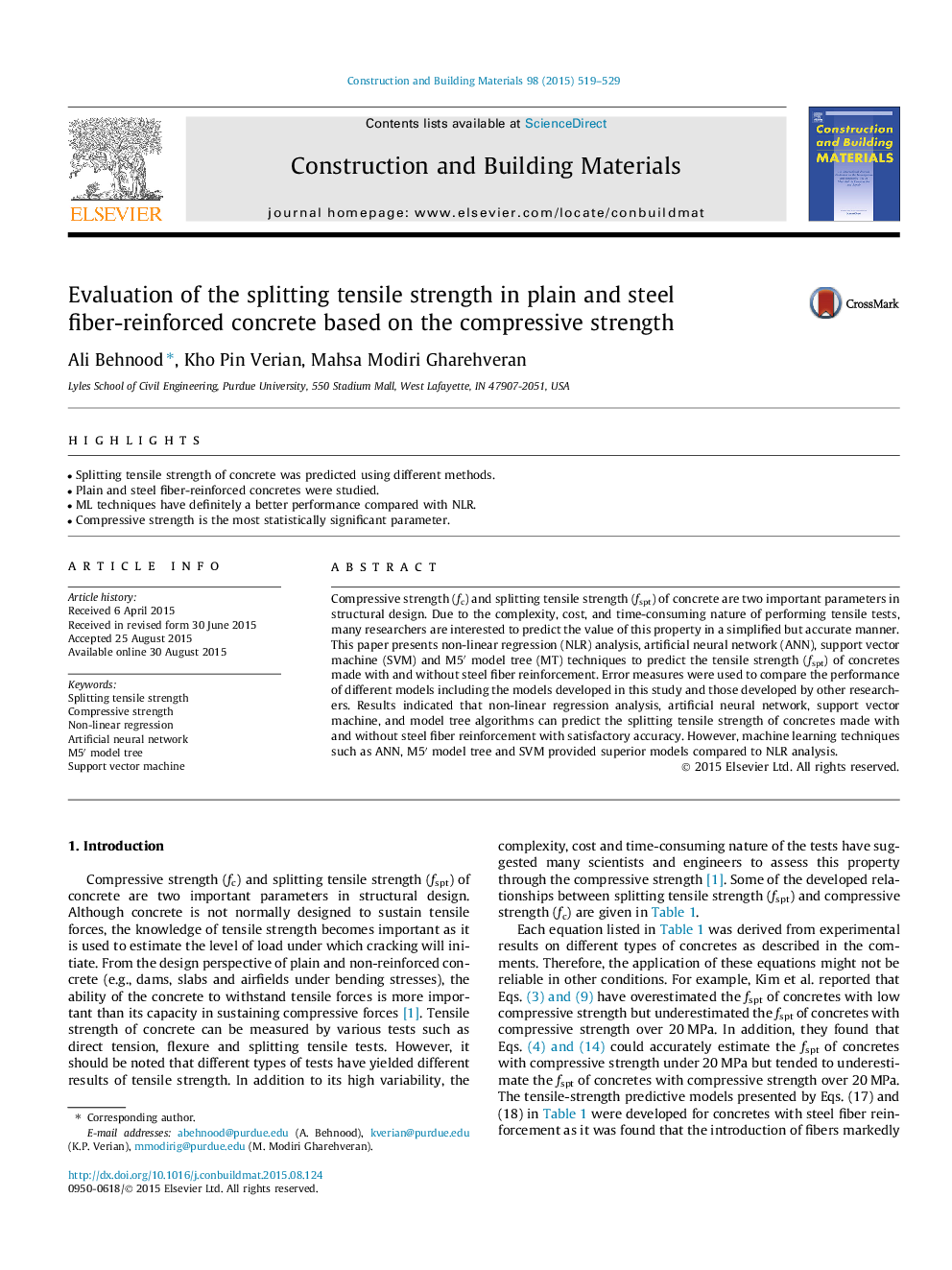| کد مقاله | کد نشریه | سال انتشار | مقاله انگلیسی | نسخه تمام متن |
|---|---|---|---|---|
| 256624 | 503557 | 2015 | 11 صفحه PDF | دانلود رایگان |
• Splitting tensile strength of concrete was predicted using different methods.
• Plain and steel fiber-reinforced concretes were studied.
• ML techniques have definitely a better performance compared with NLR.
• Compressive strength is the most statistically significant parameter.
Compressive strength (fc) and splitting tensile strength (fspt) of concrete are two important parameters in structural design. Due to the complexity, cost, and time-consuming nature of performing tensile tests, many researchers are interested to predict the value of this property in a simplified but accurate manner. This paper presents non-linear regression (NLR) analysis, artificial neural network (ANN), support vector machine (SVM) and M5′ model tree (MT) techniques to predict the tensile strength (fspt) of concretes made with and without steel fiber reinforcement. Error measures were used to compare the performance of different models including the models developed in this study and those developed by other researchers. Results indicated that non-linear regression analysis, artificial neural network, support vector machine, and model tree algorithms can predict the splitting tensile strength of concretes made with and without steel fiber reinforcement with satisfactory accuracy. However, machine learning techniques such as ANN, M5′ model tree and SVM provided superior models compared to NLR analysis.
Journal: Construction and Building Materials - Volume 98, 15 November 2015, Pages 519–529
